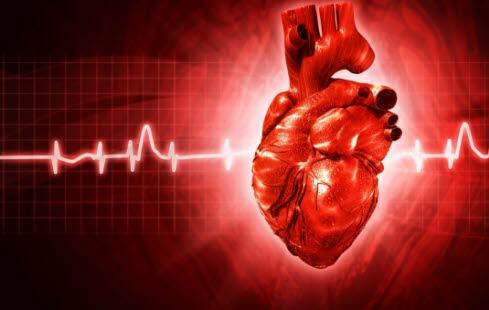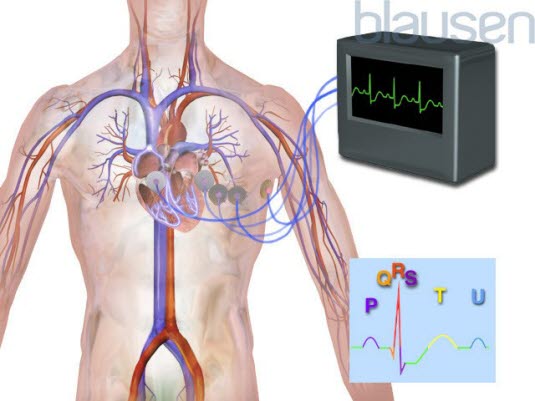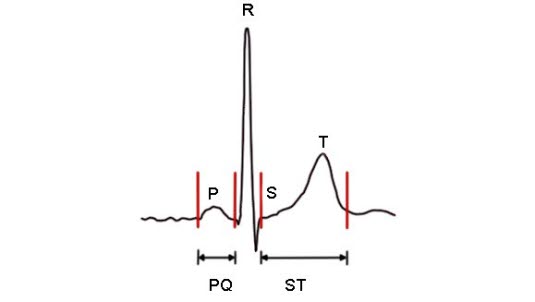Angina pectoris, undersøkelser og prøver
Diagnosen kan i de fleste tilfeller stilles med stor sikkerhet av allmennlegen på bakgrunn av en typisk sykehistorie.

Sist oppdatert:
11. juli 2018
Innhold i artikkelen
Nyoppdaget angina pectoris
Hos de fleste med angina er tilstanden stabil, den forverrer seg lite og de kan leve med sin angina i mange år uten at det oppstår komplikasjoner. Men angina pectoris er også en tilstand som kan få alvorlige følger, fordi angina kan være en forløper til hjerteinfarkt, hjerterytmeforstyrrelser, og i verste fall hjertestans.
Diagnosen kan i de fleste tilfeller stilles med stor sikkerhet av allmennlegen på bakgrunn av en typisk sykehistorie. Kroppsundersøkelsen, blodprøver og EKG kan hjelpe allmennlegen til å fastslå om det foreligger skade på hjertet, samt å påvise eventuelle risikofaktorer for hjertekarsykdom. Blodprøve til undersøkelse på diabetes og måling av kolesterolinnholdet i blodet inngår i denne undersøkelsen.
For å avklare alvorlighetsgraden, og for å få bekrefetet diagnosen, vil det noen ganger være nødvendig å henvise deg til en hjertespesialist med tanke på eventuell videre utredning. I første omgang er det aktuelt å få tatt et arbeids-EKG (EKG ved fysisk belastning på ergometersykkel) og eventuelt få utført ultralydundersøkelse av hjertet (ekkokardiografi). Unormale funn kan medføre behov for ytterligere utredning og eventuelt behandling - først og fremst i form av hjertekateterisering.
EKG og arbeids-EKG
EKG er en ufarlig og smertefri undersøkelse som gjøres på alle som mistenkes å ha hjertesykdom. Undersøkelsen registrerer de elektriske signalene i hjertet. Under normale forhold viser EKG'et et typisk mønster. Avvik fra dette mønsteret kan være uttrykk for sykdom eller skade i hjertet. I tillegg gir EKG informasjon om hjerterytmen og om hjertet er overbelastet (forstørret). De fleste allmennlegekontor er utstyrte med EKG.


Ved angina vil et ordinært EKG som regel være normalt i hvile, når det ikke foreligger angina-smerter. Derimot vil EKG'et kunne vise typiske forandringer hvis det blir registrert mens du anstrenger deg (arbeids-EKG). En slik undersøkelse fanger ikke opp alle. Ved sterk mistanke om angina, men normalt arbeids-EKG, vil en likevel bli henvist til hjertekateterisering. Arbeids-EKG utføres av hjertespesialister og indremedisinere både utenfor og i sykehus.
Et unormalt arbeids-EKG kan gi informasjon om hvor alvorlig anginatilstanden er, og informasjonen er nyttig for den videre utredningen.

Ekkokardiografi
Ultralyd av hjertet kan være en nødvendig undersøkelse for å avklare om det er underliggende sykdom i hjertet eller om det er skader på hjertet etter tidligere hjerteinfarkt. Enkelte hjerteinfarkt er "stumme", de kan forløpe helt uten symptomer.
Utredning i sykehus
Dersom du blir lagt inn eller henvist til utredning på sykehus i forbindelse med et kraftig anginaanfall, vil det vanligvis bli tatt en del andre undersøkelser i tillegg.
Røntgen av brystet
Et røngenbilde av lungene og hjertet ditt viser om størrelsen på hjertet er som forventet, og om det foreligger væske eller andre forandringer i lungene. Trange blodårer eller skader etter tidligere hjerteinfarkt er ikke synlige på vanlig røntgen. Røntgenundersøkelsen kan være nyttig for å utelukke andre forklaringer på brystsmertene dine.
Blodprøver
Det eksisterer ingen blodprøve som kan avsløre angina pectoris med sikkerhet, men blodprøver brukes til å påvise eller avkrefte om det foreligger et hjerteinfarkt.
Myokardscintigrafi
Denne undersøkelsen er ikke tilgjengelig ved alle sykehus. Undersøkelsen kan være aktuell ved usikre funn ved belastnings-EKG. Scintigrafi av hjertet er en isotopundersøkelse. Det blir injisert en ørliten dose radioaktivt stoff som fordeles i hjertemuskelen og gir informasjon om blodsirkulasjonen i hjertet. Undersøkelsen gjennomføres med bruk av datateknikk som gjør det mulig å lage snittbilder av hjertet.
Hjertekateterisering
Dette er den mest nøyaktige undersøkelsen av hjertemuskelens blodårer (kransårene eller koronararteriene på fagspråk). Undersøkelsen innebærer at et tynt plastkateter føres inn i pulsåren i lysken eller håndleddet, føres opp til hjertet og ut i koronararteriene. Kontraststoff sprøytes ut i koronararteriene samtidig som det tas bilder. Legene vil da kunne påvise og lokalisere eventuelle innsnevringer på årene. Hvis innsnevringene lar seg behandle med blokking av årene, gjøres det i samme seanse.
Vil du vite mer
- Angina pectoris, oversikt
- Angina pectoris, årsaker
- Angina pectoris, symptomer
- Angina pectoris, når bør du søke hjelp
- Angina pectoris, inndeling
- Angina pectoris, behandling
- Angina pectoris, oppfølging og kontroller
- Ustabil angina pectoris
- Hjerteinfarkt
- Hjerterytmeforstyrrelser
- Arbeids-EKG
- Ekkokardiografi
- Hjertekateterisering
- EKG
- EKG ved anginaanfall
- Myokardscintigrafi
- Hjertekateterisering
- Hjerteinfarkt, animasjon
- Koronar angiografi, animasjon
- Blokking av koronararterie, animasjon
- Fjerning av plakk i koronararterie, animasjon
Dette dokumentet er basert på det profesjonelle dokumentet Angina pectoris, stabil . Referanselisten for dette dokumentet vises nedenfor
- Knuuti J, Wijns W, Saraste A, et al. 2019 ESC Guidelines for the diagnosis and management of chronic coronary syndromes: The Task Force for the diagnosis and management of chronic coronary syndromes of the European Society of Cardiology (ESC). Eur Heart J 2019. doi:10.1093/eurheartj/ehz425 DOI
- Folkehelseinstituttet. Hjerte- og karregisteret. Diagnoser 2018. statistikkbank.fhi.no
- Schoenhagen P, Ziada RM, Kapadia SP, Crowe TD, Nissen SE, Tuzcu EM. Extent and direction of arterial remodeling in stable versus unstable coronary syndromes: an intravascular ultrasound study. Circulation 2000; 101: 598-603. Circulation
- Halcox JP, Schenke WH, Zalos G, et al. Prognostic value of coronary vascular endothelial dysfunction. Circulation 2002; 106: 653-8. Circulation
- Opie LH, Commerford PJ, Bersh BJ. Controversies in stable coronary artery disease. Lancet 2006; 367: 69-78. PubMed
- Kaski JC. Pathophysiology and management of patients with chest pain and normal coronary arteriograms (cardiac syndrome X). Circulation 2004; 109: 568-72. Circulation
- Gotto AM jr., LaRosa JC, Hunninghake D, Grundy SM, Wilson PW, Clarkson TB et al. The cholesterol facts. A summary of the evidence relating dietary fats, serum cholesterol, and coronary heart disease. A joint statement by the American Heart Association and the National Heart, Lung and Blood Institute. Circulation 1990; 81: 1721-33. Circulation
- Lakka H-M, Lakka TA, Tuomilehto J, Salonen JT. Abdominal obesity is associated with increased risk of acute coronar events in men. Eur Heart J 2002; 23: 706-13. PubMed
- Rosengren A, Hawken S, Ôunpuu S, et al. Association of psychosocial risk factors with risk of acute myocardial infarction in 11 119 cases and 13 648 controls from 52 countries (the INTERHEART study): case-control study. Lancet 2004; 364: 953-62. PubMed
- Bogers RP, Bemelmans WJ, Hoogenveen RT, et al. Association of overweight with increased risk of coronary heart disease partly independent of blood pressure and cholesterol levels: A meta-analysis of 21 cohort studies including more than 300 000 persons. Arch Intern Med 2007; 167: 1720-8. PubMed
- Yusuf S, Hawken S, Ôunpuu S et al. Obesity and the risk of myocardial infarction in 27 000 participants from 52 countries: a case-control study. Lancet 2005; 366: 1640-9. PubMed
- Smith JK, Dykes R, Douglas JE, Krishnaswamy G, Berk S. Long-term Exercise and Atherogenic Activity og Blood Mononuclear Cells inPersons at Risk of Developing Ischemic Heart Disease. JAMA 1999; 281:1722-1727. Journal of the American Medical Association
- Hemingway H, Marmot M. Psychosocial factors in the primary and secondary prevention of coronary heart disease: a systematic review. I: Yusuf S, Cairns JA, Camm AJ, Fallen EL, Gersh BJ, red. Evidence based cardiology. London: BMJ Books, 1998: 269-85.
- Tirosh A, Shai I, Tekes-Manova D et al. Normal fasting plasma glucose levels and type 2 diabetes in young men. N Engl J Med 2005; 353: 1454-62. New England Journal of Medicine
- Sattar N, Gaw A, Scherbakova O, et al. Metabolic syndrome with and without C-reactive protein as a predictor of coronary heart disease and diabetes in the West of Scotland Coronary Prevention Study. Circulation 2003; 108: 414-9. Circulation
- Prior JO, Quinones MJ, Hernandez-Pampaloni M, et al. Coronary circulatory dysfunction in insulin resistance, impaired glucose tolerance, and type 2 diabetes mellitus. Circulation 2005; 111: 2291-8. Circulation
- The HOPE study investigators. Vitamin E supplementation and cardiovascular events in high-risk patients. N Engl J Med 2000; 342:154-60. New England Journal of Medicine
- Bønaa KH, Njølstad I, Ueland PM, Schirmer H, Tverdal A, Steigen T, Wang H, Nordrehaug JE, Arnesen E, Rasmussen K; NORVIT Trial Investigators. Homocysteine lowering and cardiovascular events after acute myocardial infarction. N Engl J Med 2006; 354: 1578-88. PubMed
- Bello N, Mosca L. Epidemiology of coronary heart disease in women. Prog Cardiovasc Dis 2004; 46: 287-95. PubMed
- Bugiardini R, Bairey Merz CN. Angina with "normal" coronary arteries: a changing philosophy. JAMA 2005; 293: 477-84. Journal of the American Medical Association
- Abrams J. Chronic stable angina. N Engl J Med 2005; 352: 2524-33. PubMed
- Sekhri N, Feder GS, Junghans C, et al. Incremental prognostic value of the exercise electrocardiogram in the initial assessment of patients with suspected angina: cohort study. BMJ 2008; 337: a2240. BMJ (DOI)
- Maffei E, Seitun S, Martini C, et al. CT coronary angiography and exercise ECG in a population with chest pain and low-to-intermediate pre-test likelihood of coronary artery disease. Heart 2010; 96: 1973-9. PubMed
- Klocke FJ, Baird MG, Lorell BH, et al. ACC/AHA/ASNC guidelines for the clinical use of cardiac radionuclide imaging -- executive summary: a report of the American College of Cardiology/American Heart Association Task Force on Practice Guidelines (ACC/AHA/ASNC Committee to Revise the 1995 Guidelines for the Clinical Use of Cardiac Radionuclide Imaging). Circulation 2003; 108: 1404-18. Circulation
- Papachristidis A, Vaughan GF, Denny SJ, et al. Comparison of NICE and ESC proposed strategies on new onset chest pain and the contemporary clinical utility of pretest probability risk score. Open Heart. 2020 May;7(1):e001081. doi: 10.1136/openhrt-2019-001081. PMID: 32467136. PubMed
- US Preventive Services Task Force. Screening for Cardiovascular Disease Risk With Electrocardiography. US Preventive Services Task Force Recommendation Statement. JAMA 2018; 319: 2308-14. pmid: 29896632 PubMed
- Boden WE, O'Rourke RA, Teo KK, et al, for the COURAGE Trial Research Group. Optimal medical therapy with or without PCI for stable coronary disease. N Engl J Med 2007; 356: 1503-16. New England Journal of Medicine
- Frye RL, August P, Brooks MM, et al. BARI 2D study group. A randomized trial of terapies for type 2 diabetes and coronary arterry disease. N Engl J Med 2009; 360: 2503-15. New England Journal of Medicine
- Wijeysundera HC, Nallamothu BK, Krumholz HM, et al. Meta-analysis: Effects of percutaneous coronary intervention versus medical therapy on angina relief. Ann Intern Med 2010; 152: 370-9. Annals of Internal Medicine
- Maron DJ, Hochman JS, Reynolds HR, et al. Initial Invasive or Conservative Strategy for Stable Coronary Disease. N Engl J Med 2020; 382: 1395-407. pmid:32227755 PubMed
- Trikalinos TA, Alsheikh-Ali AA; Tatsioni A, et al. Percutaneous coronary interventions for non-acute coronary artery disease: quantitative 20-year synopsis and a network meta-analysis. Lancet 2009; 373: 911-8. PubMed
- Sipahi I, Akay MH, Dagdelen S, et al. Coronary artery bypass grafting vs percutaneous coronary intervention and long-term mortality and morbidity in multivessel disease. Metaanalysis of randomized clinical trials of the arterial grafting and stenting era. JAMA 2013. doi:10.1001/jamainternmed.2013.12844 DOI
- Head SJ, Milojevic M, Daemen J, et al. Mortality after coronary artery bypass grafting versus percutaneous coronary intervention with stenting for coronary artery disease: a pooled analysis of individual patient data. Lancet 2018; 391: 939. pmid:29478841 PubMed
- Head SJ, Milojevic M, Daemen J, et al. Stroke Rates Following Surgical Versus Percutaneous Coronary Revascularization. J Am Coll Cardiol 2018; 72: 386. pmid:30025574 PubMed
- Stead LF, Buitrago D, Preciado N, Sanchez G, Hartmann-Boyce J, Lancaster T. Physician advice for smoking cessation. Cochrane Database of Systematic Reviews 2013, Issue 5. Art. No.: CD000165. DOI: 10.1002/14651858.CD000165.pub4. DOI
- Barnoya J and Glantz SA. Cardiovascular effects of secondhand smoke: nearly as large as smoking. Circulation 2005; 111: 2684-98. Circulation
- Weitzman M, Cook S, Auinger P, et al. Tobacco smoke exposure is associated with the metabolic syndrome in adolescents. Circulation 2005; 112: 862-9. Circulation
- Hooper L, Summerbell CD, Thompson R, Sills D, Roberts FG, Moore HJ, Davey Smith G. Reduced or modified dietary fat for preventing cardiovascular disease. Cochrane Database of Systematic Reviews 2012, Issue 5. Art. No.: CD002137. DOI: 10.1002/14651858.CD002137.pub3. DOI
- Heidenreich PA, McDonald KM et al. Meta-analysis of trials comparing beta-blockers, calcium antagonists, and nitrates for stable angina. A systematic review. JAMA 1999; 281: 1927-36. Journal of the American Medical Association
- Gibbons RJ, Abrams J, Chatterjee K, et al. ACC/AHA 2002 guideline update for the management of patients with chronic stable angina -- summary article: a report of the American College of Cardiology/American Heart Association Task Force on Practice Guidelines (Committee on the Management of Patients with Chronic Stable Angina). J Am Coll Cardiol 2003; 41: 159-68. PubMed
- Salpeter SR, Ormiston TM, Salpeter EE, Wood-Baker R. Cardioselective beta-blockers for reversible airway disease. Cochrane Database of Systematic Reviews 2002, Issue 4. Art. No.: CD002992. DOI: 10.1002/14651858.CD002992. DOI
- Sabatine MS, Giugliano RP, Keech AC, et al. Evolocumab and clinical outcomes in patients with cardiovascular disease. N Engl J Med 2017. pmid:28304224 PubMed
- Shin E-S, Lee J-H, Yoo S-Y, et al. A randomised, multicentre, double blind, placebo controlled trial to evaluate the efficacy and safety of cilostazol in patients with vasospastic angain. Heart 2014. doi:10.1136/heartjnl-2014-305986 DOI
- Colhoun HM, Betteridge DJ, Durrington PN, et al. Primary prevention of cardiovascular disease with atorvastatin in type 2 diabetes in the Collaborative Atorvastatin Diabetes Study (CARDS): multicentre randomised placebo-controlled trial. Lancet 2004; 364: 685-96. PubMed
- LaRosa JC, Grundy SM, Waters DD, et al. Intensive lipid lowering with atorvastatin in patients with stable coronary disease. N Engl J Med 2005; 352: 1425-35. New England Journal of Medicine
- Bangalore S, Fakheri R, Wandel S, et al. Renin angiotensin system inhibitors for patients with stable coronary artery disease without heart failure: Systematic review and meta-analysis of randomized trials. BMJ 2017; doi: 10.1136/bmj.j4 DOI
- Noman A, Ang DSC, Ogston S, et al. Effect of high-dose allopurinol on exercise in patients with chronic stable angina: a randomised, placebo controlled crossover trial. Lancet 2010; 375: 2161-7. PubMed
- Nidorf SM, Fiolet ATL, Mosterd A, et al. Colchicine in Patients with Chronic Coronary Disease. N Engl J Med. 2020 Aug 31. PMID: 32865380 PubMed
- Kappetein AP, Feldman TE, Mack MJ, et al. Comparison of coronary bypass surgery with drug-eluting stenting for the treatment of left main and/or three-vessel disease: 3-year follow-up of the SYNTAX trial. Eur Heart J 2011; 32: 2125-34. pmid:21697170 PubMed
- Maagaard M, Nielsen EE, Sethi NJ, et al. Effects of adding ivabradine to usual care in patients with angina pectoris: a systematic review of randomised clinical trials with meta-analysis and Trial Sequential Analysis. Open Heart 2020. pmid:33046592 PubMed
- Salazar CA, Basilio Flores JE, Veramendi Espinoza LE, et al. Ranolazine for stable angina pectoris. Cochrane Database Syst Rev. 2017 Feb 8;2:CD011747. doi: 10.1002/14651858.CD011747.pub2. (Review) PMID: 28178363 PubMed
- Al-Lamee RA, Nowbar AN, Francis DP. Percutaneous coronary intervention for stable coronary artery disease. Heart 2019; 105: 11-19. doi:10.1136/heartjnl-2017-312755 DOI
- Lied A, Morstøl TH, Vik-Mo H. Koronar angioplastikk hos eldre pasientar. Tidsskr Nor Lægeforen 2002; 122: 1266-9. PubMed
- Mohr FW, Morice M-C, Kappetein AP, et al. Coronary artery bypass graft surgery versus percutaneous coronary intervention in patients with three-vessel disease and left main coronary disease: 5-year follow-up of the randomised, clinical SYNTAX trial. Lancet 2013; 381: 629-38. pmid:23439102 PubMed
- Thuijs DJFM, Kappetein AP, Serruys PW, et al. Percutaneous coronary intervention versus coronary artery bypass grafting in patients with three-vessel or left main coronary artery disease: 10-year follow-up of the multicentre randomised controlled SYNTAX trial. Lancet 2019. pmid:31488373 PubMed
- American College of Cardiology and American Heart Association. Guidelines for coronary artery bypass graft surgery: Executive summary and recommendations. Circulation 1999; 100: 1464-80. PubMed
- Udell JA, Zawi R, Bhatt DL, et al. Association between influenza vaccination and cardiovascular outcomes in high-risk patients: a meta-analysis. JAMA 2013 Oct 23;310(16):1711-20. PubMed
- Long L, Anderson L, Dewhirst AM, He J, Bridges C, Gandhi M, Taylor RS. Exercise‐based cardiac rehabilitation for adults with stable angina. Cochrane Database of Systematic Reviews 2018, Issue 2. Art. No.: CD012786. DOI: 10.1002/14651858.CD012786.pub2. DOI
- Anderson L, Thompson DR, Oldridge N, Zwisler AD, Rees K, Martin N, Taylor RS. Exercise‐based cardiac rehabilitation for coronary heart disease. Cochrane Database of Systematic Reviews 2016, Issue 1. Art. No.: CD001800. DOI: 10.1002/14651858.CD001800.pub3. DOI
- Windecker S, Stortecky S, Stefanini GG, et al. Revascularisation versus medical treatment in patients with stable coronary artery disease: network meta-analysis. BMJ 2014 Jun 23;348:g3859. PubMed
- Gada H, Kirtane AJ, Kereiakes DJ, et al. Meta-Analysis of Trials on Mortality After Percutaneous Coronary Intervention Compared With Medical Therapy in Patients With Stable Coronary Heart Disease and Objective Evidence of Myocardial Ischemia. Am J Cardiol. 2015. doi:10.1016/j.amjcard.2015.01.556 DOI
- Meland E, Ellekjær H, Gjelsvik B, Kimsås A, Holmen J, Hetlevik I. Forebyggende livsstilsråd mot hjerte- og karsykdommer i primærhelsetjenesten. Tidsskr Nor Lægeforen 2000; 120: 2656-60. Tidsskrift for Den norske legeforening
- Eikelboom JW, Connoly SJ, Bosch J, et al. Rivaroxaban with or without Aspirin in Stable Cardiovascular Disease. N Engl J Med 2017. doi:10.1056/NEJMoa1709118 DOI